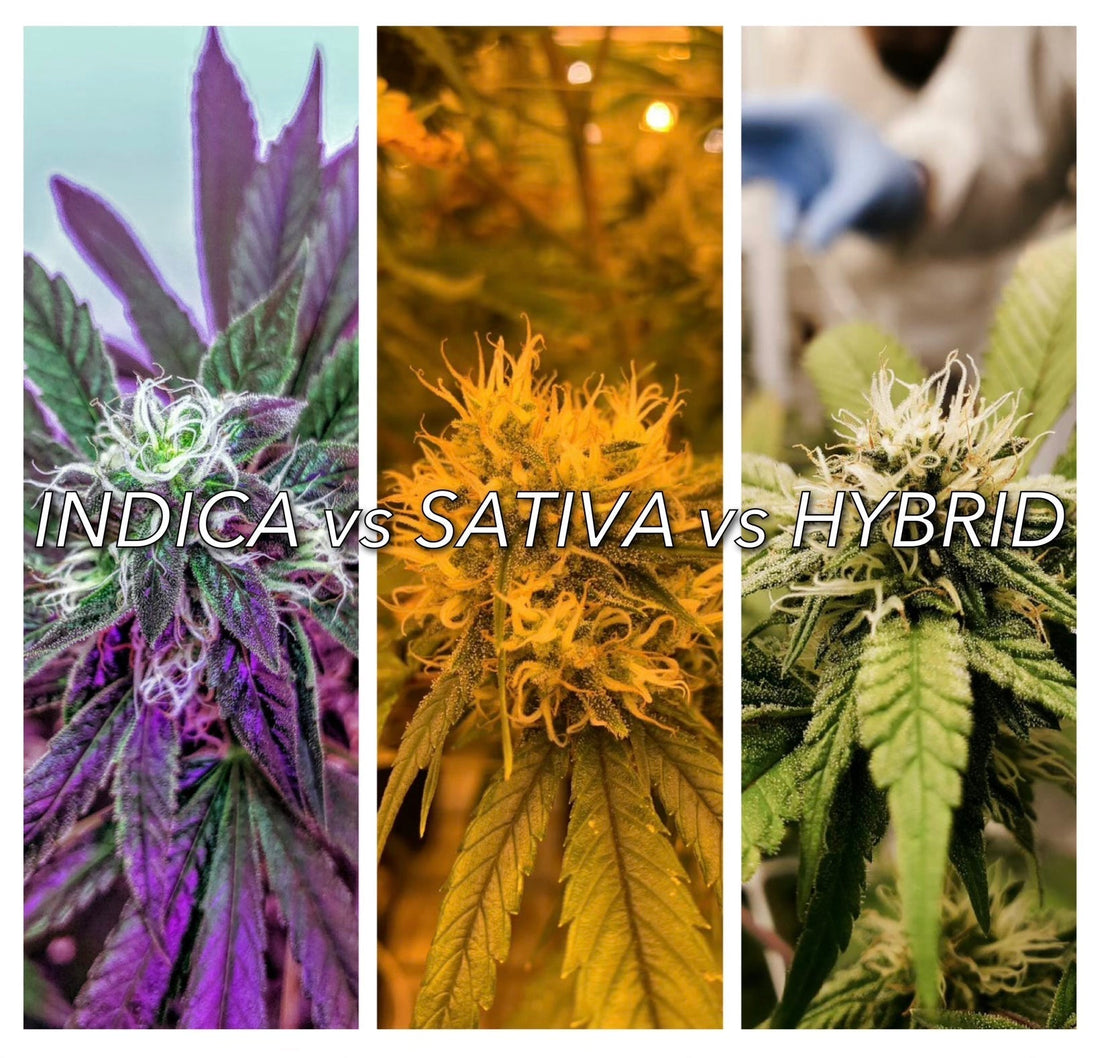
What is the difference between Sativa, Indica, and Hybrid?
Compartir
Sativa and Indica are the two main varieties of cannabis, though they are often considered opposites when it comes to their effects. The Sativa plant is taller and thinner than its Indica cousins, with spindly, finger-like leaves. Sativa plants also tend to take longer to mature than other types of cannabis plants. Traditionally, Sativa strains have been associated with uplifting and energizing effects, often called a “Head High.” These effects are popular with recreational consumers who enjoy the feelings of happiness or euphoria that many Sativa strains produce.
Popular Sativa Strains Include:
- Jack Herer
- Durban Poison
- Strawberry Cough
- Amnesia Haze
- Lemon Haze
- Tropicana Cookies
Indica plants, on the other hand, are shorter and stockier than Sativa plants and tend to grow faster. They are also known for producing a higher concentration of buds. Indica strains are associated with calming and relaxing effects, often described as a “Body High.” These effects are believed to help with anxiety, insomnia, pain, and nausea. While Indica strains are commonly thought of as being CBD-rich, many also contain high levels of THC. The relaxing effects often attributed to Indica are largely influenced by terpenes such as myrcene and linalool, found in many Indica-dominant strains.
Popular Indica Strains Include:
- Granddaddy Purp
- Purple Punch
- The Original Z
- Bubba Kush
- Grape Ape
- Northern Lights
Hybrid strains, as the name suggests, are a combination of Sativa and Indica genetics, bred to bring out specific desirable traits from both. These strains are usually cultivated in greenhouses or farms, allowing growers to enhance the parent plants' particular effects, flavors, or growing characteristics. Because Hybrid strains are so diverse in their genetic makeup, their effects can vary widely, ranging from uplifting and stimulating to calming and sedative. The appearance of Hybrid plants also varies greatly due to the many combinations of parent plants and cultivation methods.
Popular Hybrid Strains Include:
- Wedding Cake
- Gelato
- Sour Diesel
- OG Kush
- White Widow
- AK-47
What does this mean for THCa?
THCa, the acidic precursor to THC, is found in raw cannabis and is non-psychoactive until it undergoes decarboxylation (a process triggered by heat or UV light) to become THC. Many strains that are cultivated for high THCa content tend to be Indica-leaning hybrids, as Indica plants are often shorter, resin-heavy, and better suited for efficient cultivation.
This preference for Indica-leaning hybrids is largely due to their genetic tendencies. Indica plants are known for producing higher levels of THCa while maintaining low levels of Delta-9 THC, making them ideal for federally legal cannabis products. Sativa plants, on the other hand, are more likely to convert THCa to Delta-9 THC during growth and curing, as they thrive in warmer climates where this process is more likely to occur.
Explore our THCa products at SasquaTHCa.com.










